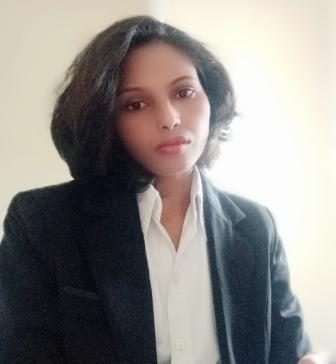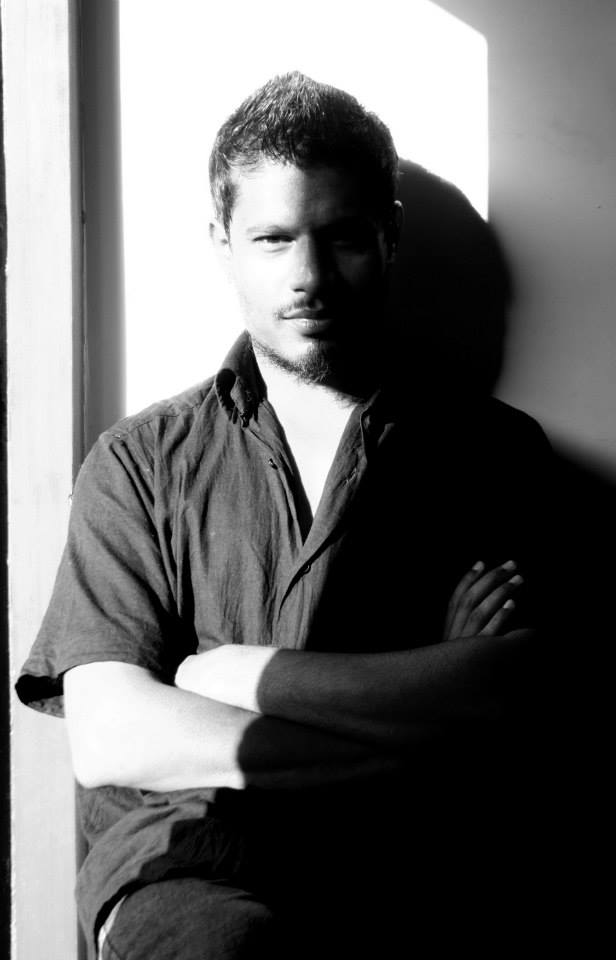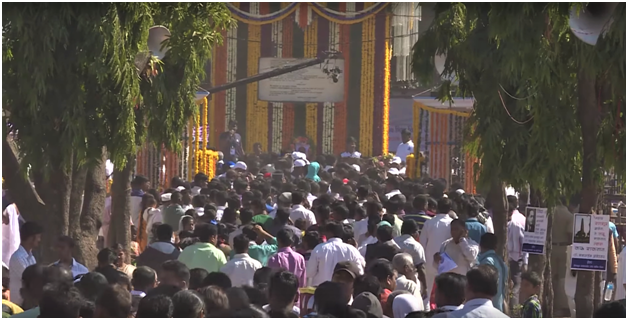Saraswati Suna
 “I measure the progress of a community by the degree of progress which women have achieved.” ~ Dr. B. R. Ambedkar
“I measure the progress of a community by the degree of progress which women have achieved.” ~ Dr. B. R. Ambedkar
Education is a path for equal opportunity and ensures possibilities for individual growth, social mobilities and economic empowerment to the oppressed, Dalit and marginalized communities. However, education throughout Indian history has only partially fulfilled these expectations. Thus, the issue addressed in this paper is how Dalit women carve out their democratic space as well as find their place in the institutions of higher education; and what do they aspire to be in the academic world. This study attempts to scrutinize why even after seven decades of independence, Dalit women constitute a tiny part in the institutions of higher education.
Due to the Brahmanical hegemony, they have been ignored and also denied opportunities to access education in general and higher education in particular. Along with Brahmanical hegemony, Dalit women are dominated by Dalit men as well. Dalit men are not helping them to come out from male domination. Dalit women are very few in numbers, not only in higher education but also in every domain of society. Though the Dalit women are equally interested in pursuing education, they are forced not to pursue their dreams. The lower rate of participation and enrollment of Dalit women does not mean that they are not interested in education. But they are denied opportunities to access higher education. Dalit women come to universities through the experience of struggles and difficulties. Many of them are not able to reach to higher education because of structural reasons such as class, caste, gender, and patriarchy that creates hundreds of impediments for them to continue their dreams.
I can share my experience here, despite facing prejudice and discrimination since my childhood. I never stopped dreaming of going ahead and continuing to pursue my dream of education. My valuable icons are Buddha, Krantijyoti Savitribai Phule, Jotiba Phule, Mata Ramabai, Dr B.R Ambedkar, Manyavar Kanshiram, Phoolan Devi, Bhima Bhoi and many Bahujan revolutionaries. My motivation developed in my determination to disprove the myths about Dalit women’s underachievement. Preconceptions, as well as discrimination, were something which I learnt about when I came to the world. My mother was an independent woman, my father to grandfather all depended on her. Even if a woman is independent in this Brahmanical/Manubadi culture, she has no value in it. This Brahmanical culture dominates our Dalit community too. During my high school days, one day my mother told me in her own words:
“You have to study more to prove that you can do equally as a boy. Your grandfather asked me why you are born a girl, felt that you should have been born a boy because you cannot plough land as a girl. So, you have to study more to prove my worth.”
From the moment of my birth, my mother and I both faced gender discrimination because we are women. When I went out of our community, I faced untouchability in the outside world. When I go to purchase groceries and other stuff at a shop, they (so-called upper castes) will not touch us even today. We are not allowed to go to ritual places, and so on. The point is not about going to these places, the important point here is how even in 21st century we are denied our humanhood. During school days, the prejudices that I have faced did not shock me because it was not the first time that we faced such discrimination. Starting from our birth, we have seen this untouchability and atrocities on us. Two women who used to cook in our school used to practice untouchability as other Hindu students do with us. The cooks who used to prepare food in school were OBC women, and another was an S.T. woman, they used to drop food from a distance in our plates. In case we touched the cooked food they were serving, they used to throw it out, or they used to give it to us. All these discriminations, atrocities of caste and gender constitute my Dalit woman world.
Apart from that, during my college (M.A.) time, I had always been praised by my teachers due to my best performance. Ironically, one teacher who did not want to see me in the first position in the class always pointed at me as an example of a a good student. From the first semester to last semester, I used to get sixty per cent in a paper. At the same time, I got seventy per cent in other papers. Since we belong to the Dalit community, the upper caste teachers do not want to see us in the top position in the class. I have witnessed the strategic ways and practices through which Dalit men and women negotiate the system so that they can succeed against all these odds.
However, the path is difficult and is possible through higher education. We should resist and annihilate the Brahmanical patriarchy cultural deficit model. Thus, discrimination against Dalits in general and the Dalit women in particular, in the entire higher education system is a widespread phenomenon in the Indian caste patriarchal society. Dalit women face social exclusion, alienation, as well as physical abuse in educational places at all levels from schools to Universities. In a progressive and modern democratic society, all women should live a life of liberty, equality, fraternity and justice. The community should be such that every single individual can grow to the fullest human capacities. Individual choice of freedom, faith, education, and occupation must be respected by society. Any individual or group of individuals in a society must not be exploited and discriminated based on their gender, class, caste, region, religion, race, and language and so on.
However, historically that kind of society has remained a utopia. Almost every community in the world has remained exploitative to specific individuals and groups. Exploitation and discrimination exist at different levels and vary in degrees. There is a mass movement from the bottom of the society that promises to change the face of higher education in years to come. Significant numbers of Dalits are already in universities, colleges as well as in other higher educational institutions.
Dalit Women in Higher Education
Kar and Kar (1999) conducted a study on the dropout rate among low income families in rural Odisha. The authors had attempted to study the impact of a micro specific socio-economic parameter on the level of female education. The samples were drawn from the 13 undivided districts of the state and grouped into three categories with the head of female educational attainment. Longer distance from the workplace of the members was one of the inhibiting factors for women’s education. It found that families with more members compelled women to devote time to household work, whereas the families having more female members could act as a facilitating factor for educational attainment. Upper caste women were more educated than S.C.s/S.T. women, precisely because of the caste/tribe they are born into. Another factor, according to John (2012), is caste or gender and religion also add to the disadvantages. Further, she mentioned that the complex and elusive nature of gender discrimination against women from different groups is visible. Privatization has intensified the socio-educational inequalities by reducing the scope of the state’s affirmative action/reservation policy and so cut the space for the socio-educational upliftment of weaker sections in society (Bhoi, 2011).
Paltasingh argues that the empirical study has mainly analyzed the role of gender socialization in shaping the career and educational orientation of the young students of Odisha. Further, she argues that the existing system of education not only reduces the social class and power structure but also prevailing gender disparities. The achievement of an educational system can only be noticed if it does not artificially limit thoughts, and abilities based on gender, class and caste. Of course, it is a difficult task, but it is crucial to attempt to bridge the gap. A non-sexist, non-casteist, non-classist, and non-racist educational system is one of the essential aspects of the complex struggle for the liberation of Dalit women that needs to be prioritized. The priority on the educational process in Odisha provides a clear understanding that girls are disadvantaged in their educational participation in all level of learning (Paltasingh, 2004).
Concerning the variable factors affecting the pursuit of higher education, a high degree of variation exists among women and men, across gender, caste, class and family backgrounds. According to Bijoya Mishra, she found that the performance of Dalit girls is lower than upper caste girls. She has also argued that Dalit students are hurt and humiliated by the apathetic attitude of Savarna students (2011).
There are unusually sharp regional contrasts; Dalits and the Adivasis in the state face the highest level of discrimination as compared to other states in the country. Because of educational backwardness and disadvantages in almost every district in Odisha, the level of inequalities is high. And this inequality can be seen both in urban and rural areas—education programmes and policies are not implemented with active local participation (Sailaba, 2004). Enrolment is generally evaluated using the concept of (GRE Gross Enrolment Ratio), which is the percentage of those enrolled from a given population group at a particular educational level. In the context, I would like to show the data of higher education and the age group of 18-23 years for the general population, women and men among S.C.s and S.T.s.
Table Gross Enrolment Ratio in Higher Education in Odisha (18-23 Years) from 2011 to 2014
Above table shows that gross enrolment in higher education, calculated for 18-23 age group, in Odisha increased from 16.3 to 16.4 (male enrolment number decreased from 18.6 to 18.0, but female enrolment ratio increased from 14.1 to 14.8) during 2013-14. At the national level, it increased 21.1 to 23.0 (the male ratio is 22.3 to 23.9 and female ratio is 20.1 to 22.0). The national-level enrolments of S.C.s have risen from 16.1 to 17.1 (male ratio increased from 16.9 to 17.7 and female ratio increased from 15.2 to 16.4) whereas enrollment of S.C. in higher education in Odisha increased from 8.5 to 9.6 (male is 11.1 to 11.4 and female is 9.7 to 10.2) (AISHE 2013-14). In Odisha, the Dalit women enrolment gap increased with 7.9 to 9.6 in 2013-14. This is a very negative result compared to other communities as well as other states, and it is a symbol of drop outs. Whereas S.T. enrolment is far behind, it increases from 6.1 to 6.7, and male enrolment is 7.1 to 7.4 and women enrolment are from 5.5 to 6.0. Another important reason for this negligible enrolment is poverty is higher in Odisha.
Literacy Rate and Dalit Women
Literacy rate of Odisha has increased by 9.8 per cent from 2001, and attendance rate of 72.87 per cent during 2011 is almost at par with the national average that is 73 per cent. At the national level, male literacy of 81.59 per cent is marginally higher, whereas female literacy rate of 64 per cent was almost equal to that of the national average by 2011. At high speed growth of female S.C.s/S.T. literacy rate in Odisha during the period was instrumental in the significant rise in overall literacy rate in the Odisha. Women’s literacy rate increased by 13.5 per cent as against growth in rate among males of 6.2 per cent, and the gender gap reduced remarkably from 24.84 per cent in 2001 to 17.58 per cent in 2011. However, the disparities on the literacy front among S.C.s/S.T.s remained an area of concern for the state. The S.C.s/S.T. communities had comparatively lower literacy rates (69.02 and 52.24 per cent) than the general population. In Odisha, the gender gap among S.C.s/S.T.s remained high with 20.45 and 22. 5 per cent whereas the male literacy is 72.60 and female literacy is 52.60 per cent.
Conclusion
Many studies have suggested that the presence of Dalit and Adivasi communities in higher education is marginal. When it comes to Dalit women, they are more underrepresented given the gender dynamics at work in the family and communities. Being women in the Dalit community, many of them are denied the right to pursue higher education due to patriarchy and Brahmanical culture existing in the community. Further Dalit women face discrimination, and humiliation within the family. Another reason for such disparity is poverty. Poverty is one of the reasons for such underrepresentation of Dalit Adivasis in general and Dalit/Adivasi women in particular, in higher education.
Given facts suggest that Odisha society and the state have promoted discrimination rigorously against Dalits and Adivasis. It is not that Dalits have never puit in their efforts, but the system has always remained very Brahmanical historically. And this discrimination can be found in every sphere of society. In other words, the Dalit-Bahujans are traditionally ignored, marginalized in Indian society. It emerges from the previous overview that education has brought about only a marginal effect in the traditional structure of inequalities. But it has created and strengthened new disparities in the educational system.
~
References
1. Mishra, Bijoya. 2011. Higher Education of SC/ST Girls in Orissa. New Delhi:Gyan Publishing House
2. Mishra. R.C., 1989, Role of Women Legislator of Orissa Legislative Assembly,Unpublished PhDDissertation, Utkal University, Bhubaneswar.
3. Debi. S, & Das, 1990, Disparities in Tribal Education: A case study of Mayurbhanja, Orissa.’ Suorthen Economist, 29 (2&3).
4. John, E Mary, 2012, Gender and Higher Education in the Time of Reform, SagePublication. Vol. 9, Issue.2, P.197- 221.
5. Kapoor Dip, 2007, Gender-Caste Violations and Cultural Politics of Voice in RuralOrissa, India, Gender, Place and Culture, Vol. 14, No.5.
6. Mohanty. M, 1990, Class, Caste and Dominance in a Backward State: Orissa,New Delhi: Oxford University Press.
7. Nayak. Abhilash, 2010, Education is at your Doorstep: Does the Door open for all? Regional Director, IGNOU, Regional Centre Koraput, Odisha, India,
http://wikieducator.org/images/3/3e/Abhilash_Nayak.pdf
http://aishe.nic.in/aishe/viewDocument.action?documentId=162
http://aishe.nic.in/aishe/viewDocument.action?documentId=196
http://aishe.nic.in/aishe/viewDocument.action?documentId=196
~~~
Saraswati Suna (Swati) is a research scholar at the University of Sydney, Australia. Her research is on “Experiences, Challenges, and Resistance: A Sociological Study of Dalit women at Utkal University and Sambalpur University in Odisha”.









